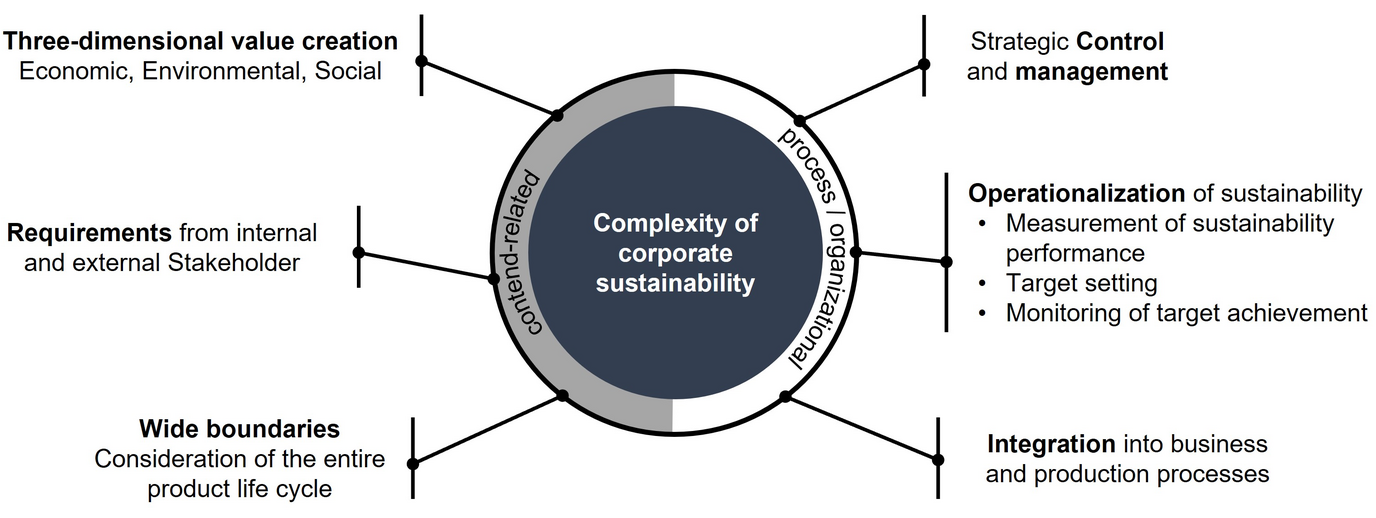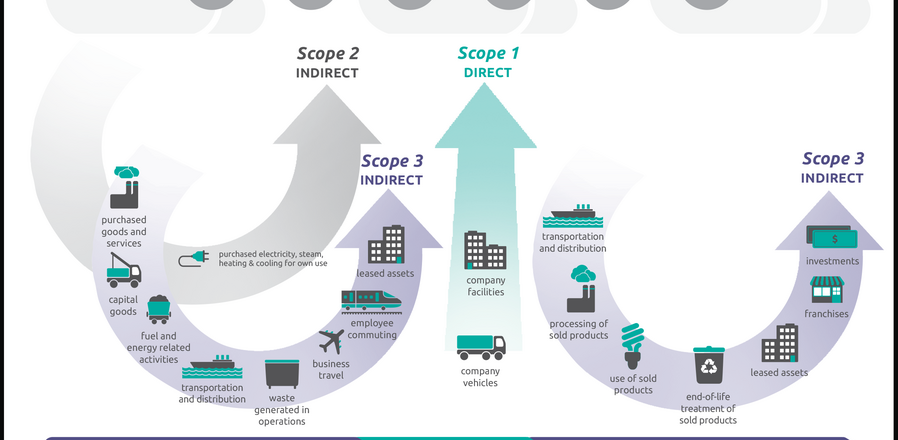
Today's global developments such as climate change, the COVID pandemic, resource scarcity and a social imbalance require responsible and far-sighted action to ensure the continuation of a world worth living in and a healthy society. Sustainability is the guiding principle for a conscious and life-serving use of environmental, social and economic resources. Increasing sustainability requirements imposed by legislators, customers or employees present challenges and opportunities in equal measure. The strategic orientation and operational activities of a manufacturing company are crucial for sustainable development and for tapping potential and minimizing risks.
NEUMAN & ESSER has faced the complexity of corporate sustainability for nearly two centuries. The interrelationships during the entire product life cycle, the requirements of stakeholders, the uncertain effects of sustainability-oriented decisions and the operationalization of sustainability performance must be considered. With the establishment of an overall corporate sustainability management and the involvement of stakeholders, we identify fields of action, methods and key figures. In this way, the optimization of the company's own sustainability performance can be reviewed based on corresponding measures.

Sustainability has always been one of the core elements of the "ONE NEA GROUP" culture. This was necessary to be successful as a family business for more than 190 years. In the future, we wants to combine long-term economic success with social and environmental responsibility and commitment, too. With the sustainability strategy, this core element of the NEUMAN & ESSER culture is given a new structure. Both the environmental and social as well as the economic dimensions of sustainability are observed in order to be integrated into the everyday business processes on an equal footing and to derive optimization measures.
"NEA TO ZERO" - Our goal is to protect the environment and natural resources by avoiding, reducing and, where unavoidable, compensating for negative environmental impacts. We strive not to consume more resources than can be regrown or regenerated. Emissions must be continuously reduced in order to contribute to avoiding a global rise in temperature and thus to the Paris Climate Agreement. This is a contribution to ensuring stable living conditions on Earth in the long term.
"NEA TO VALUE" - Economic sustainability for us means passing on a healthy and long-term profitable family business to the next generation and thus securing long-term jobs at our locations worldwide. To achieve this, profits must be generated on a lasting basis, which in the future will only be possible through three-dimensional value creation (environmental, economic and social issues). This is the only way to invest in a sustainability transformation and e.g. modern technologies, new employees and further training.
"NEA TOGETHER" - People are at the focal point of the social dimension. In this context, the interaction of people, characterized by appreciation, openness and honesty, forms the focus of social sustainability activities at NEUMAN & ESSER. This applies both within the company and with customers, partners, suppliers, service providers and society. Essential components are health and well-being across the value chain, social commitment and employee satisfaction. Fair pay, the implementation of employee interests and the opportunity for training and further education as well as free professional development are important factors here.
In the past years, many measures have already been initiated, which we are now integrating and further developing in our sustainability strategy. An essential part of the dimension "environmental sustainability" is climate protection. Due to the urgent global need for action, climate change represents one of the fundamental challenges of the 21st century and is currently the special focus of our activities. In concrete terms, we have set ourselves the goal of being climate-neutral at all locations worldwide by 2045 at the latest. We are 100% behind the goals of the Climate Protection Act of the Federal Republic of Germany.
The Guidelines of Our Climate Strategy:
The climate or greenhouse gas accounting is an important tool in climate management and the prerequisite for the development of target-oriented measures as well as continuous monitoring. We use the Greenhouse Gas (GHG) Protocol, an established standard for GHG accounting. It is oriented to the principles of transparency, relevance, completeness, consistency as well as accuracy and comprises three scopes according to the GHG Protocol:
Scope 1: Direct and self-controlled emissions from own combustion (e.g. natural gas, fuel).
Scope 2: Indirect emissions from purchased, pipeline-bound energy (e.g. electricity, district heating)
Scope 3: Other indirect emissions from upstream and downstream value chain represented by 15 categories (e.g. transportation, business travel, purchased goods)
Climate accounting considers the climate-impacting greenhouse gases carbon dioxide (CO2), methane (CH4), nitrous oxide (N2O), fluorinated and perfluorinated hydrocarbons (HFCs, PFCs), and sulfur hexafluoride (SF6). To compare all GHGs, the Global Warming Potential (GWP), meaning the global warming potential of a GHG compared to CO2 over 100 years, is applied. In this way, GHG emissions can be converted into CO2 equivalents and summarized. In addition, balance sheet boundaries play a crucial role in the preparation of carbon footprints. A distinction is made between the Corporate Carbon Footprint (CCF) and the Product Carbon Footprint (PCF). The CCF comprises the company's own greenhouse gas emissions at all sites. It is therefore a company-based approach. The PCF, on the other hand, is a product-based approach. It accounts for all greenhouse gas emissions along the entire product life cycle in relation to a defined unit of use.
In the future, the carbon footprint will be used to map the status quo, derive measures, monitor the success of the measures over time, and report on the activities in a climate report.

Greenhouse gas accounting and the introduction of structured data collection via recording systems or processes can help to achieve climate targets. The success of measures developed and controlled based on the greenhouse gas balance is decisive for this. Our focus lies on three levers to take appropriate measures that contribute to their own climate neutrality and support customers in their goals.
Innovations and strategic acquisitions have enabled us to expand and broaden our product portfolio. Holistic solutions contribute to the transformation from the fossil fuel-based oil & gas sector to a sustainable energy and economic system with green hydrogen and battery electric energy storage as well as to positive developments in the circular economy (H2 and Circular Economy). This further development of the product and service portfolio is to be continued and contribute to climate-friendly technologies and applications in line with the corporate mission "Customer-oriented solutions for a sustainable family business".
The aspiration is not only to develop sustainable products, but also to produce them in a sustainable and climate-friendly manner. To this end, operational processes such as procurement, production and distribution are continuously analyzed and optimized. In this way, GHG emissions are recorded within the company's own boundaries as well as across the entire value chain and reduced through appropriate measures. In this context, close cooperation with customers and suppliers is essential to influence upstream and downstream value creation activities.
The third lever on the path to climate neutrality relates to infrastructure. Our operating companies worldwide are called upon to use resources responsibly. In particular, energy and resource efficiency in (administrative) buildings (e.g. electricity consumption, heat consumption, water consumption or material consumption) and the vehicle fleet are important starting points for reducing greenhouse gases. Thus, sustainability aspects are also considered in current and future investments in buildings, machinery and equipment for production.
The three levers presented can only be successfully moved together by all of our employees. The education and creation of awareness are just as important as the inclusion of suggestions and ideas in order to consolidate sustainability and climate protection as a lived corporate value enriched by experiences.